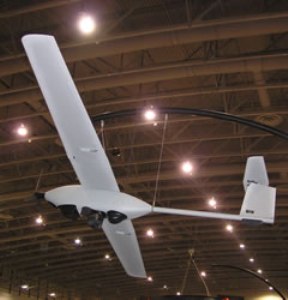Lockheed Martin has launched a tough version of the Stalker Unmanned Air System known as the Stalker eXtreme Endurance (XE) UAS. The Stalker XE system provides an endurance time of over eight hours, which is four times that of the previous stalker version.
 Stalker UAS
Stalker UAS
The increase in the endurance time does not interfere with the mobility or flexibility of the system or its payload capacity. Tom Koonce, the program manager for the Stalker UAS, explained that the new Stalker UAS is a convenient and cost effective solution for real-time missions that require long periods of surveillance such as border patrol, special operations and pipeline surveillance.
The energy source for the new Stalker is a hybrid source which comprises of propane fuel cells and a conventional lithium polymer battery for handling high power requirements. The energy system is supplied by Ultra Electronics. The fuel-cell technology was a result of developmental efforts by Lockheed Martin and Adaptive Materials, which is a part of Ultra Electronics, sponsored by Defense Advanced Research projects Agency (DARPA). After completion of the DARPA project a stringent flight testing program was conducted. The test program consisted of back-to-back extended endurance intelligence, reconnaissance and surveillance tests at high altitudes and strong winds. The success in these tests reiterated the capabilities of Stalker UAS in surpassing all performance and technical milestones. The Stalker XE system comprises of two aircrafts, fuel cells, control and command ground station, propane fuel tank and support equipment. The sensor in the air craft is a modular day and night time imager useful in providing continuous surveillance from day to night.